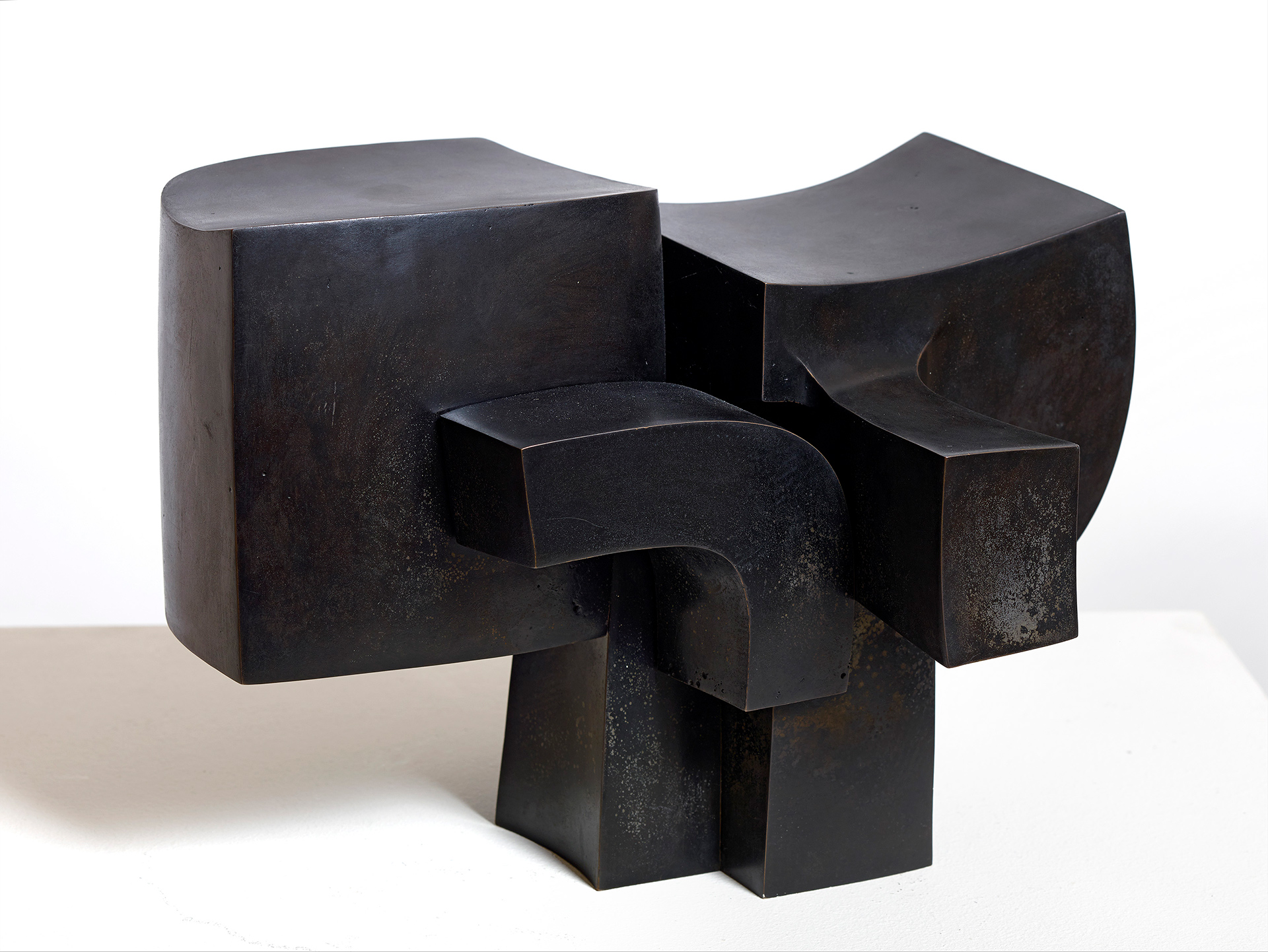
José Luis Sánchez (Almansa, Albacete, 1926)
Thanatos [Muerte]
1972
WORK INFORMATION
Bronze with patina finish, 20 × 28 × 28 cm
OTHER INFORMATION
Signed on the base: "José Luis Sánchez"
After finishing law school, José Luis Sánchez rediscovered his true calling in Ángel Ferrant's night classes at the Madrid School of Arts and Crafts. His instruction was instrumental in cementing his commitment to a personal art, which Ferrant mentioned in his text for Sánchez's first exhibition in the Santa Catalina Gallery at the Athenaeum in 1955, where he defended his student's independent thinking or, as he put it, "personal point of view", in light of the fact that "nothing that is done or has been done without passion is art". Sánchez's trip to Rome in 1952, where he discovered Etruscan art and the contemporary sculpture of Marino Marini and Giacomo Manzù, and the time spent in Milan in 1953, where he met the architects Gio Ponti and Luis Feduchi, helped to define his early figurative style and, after the Athenaeum show, to move towards a sculpture related to architecture on both the artistic and social levels, thanks to commissions from José Luis Fernández and Miguel Fisac which determined essential aspects of his work.
Relieve [Relief] and Thanatos are two good examples of his mature sculptural style, characterised by monumental forms and a constructive concept to which the artist himself referred, saying that "architecture and engineering offer the best way to study forms today". In this respect, Sánchez's working process—which goes from drawing to scale model and on to the confident formulation of the final finish, allowing the logic of the material to take precedence—shows his intelligence and sensibility, as Ferrant pointed out in the abovementioned text.
In Relief, as in other works he incorporated into architecture in the 1960s, Sánchez maintained the modern materials he had worked with in the past, namely concrete and aluminium, and used the paradigmatic typology of the integration of these arts: relief, a technique of which he made prolific use. This piece also attests to his predilection for the modulation of form and a peculiar treatment of the surface, which Cirilo Popovici likened to the geological quality of a clean-cut stone.
Horizontal structure in composition is another defining feature of his oeuvre, which we find in the black bronze piece entitled Thanatos that seems to echo his torso series from the 1960s. The legacy of humanism and Graeco-Roman culture not only underpins the piece's resemblance to a mechanical gear but also describes its universal meaning, recalling the words of Fernández del Amo when he wrote that Sánchez had "a vision of things as immersed in the spatial sculpture of the universe". [Carmen Fernández Aparicio]

